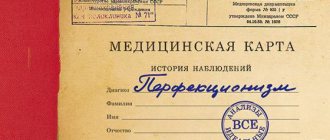A pacifist is a person who follows the ideology of fighting against violence, preventing war, establishing peace, and opposing bloodshed with the goal of their absolute eradication. Pacifists unite in peacekeeping movements, whose anti-militaristic views are aimed at eliminating the practice of resolving political conflicts through war. Adherents of this worldview are immorally opposed to any violence against the individual. The ideology of pacifists is based on the basis of humanistic and liberal values, based on the idea of peaceful resolution of conflicts of any kind. Therefore, supporters of such ideas can be any strata of society: youth, informal or religious organizations, the intelligentsia.
What does pacifist mean?
The term is borrowed from the Latin "pacificus" and consists of two parts "pac" and "facio", which translates as "world" and "I do". A pacifist is a person who consciously renounces violence and weapons; his goal is the disappearance of military methods of resolving political conflicts. Such people deny any aggression towards others. The author of this term was the French peace activist Emile Arnault, who made his proposal at the 10th World Congress in 1901.
Where do “legs grow” from?
A pacifist is a representative of an ideology that does not accept war, murder, or inflicting any bodily harm on members of an opposing group.
It doesn’t matter what caused the military conflict and what goals the warring parties pursue, it should be extinguished, regardless of whether it is a battle at the global level or a local “war” between teenagers, as they said in the 90s, “in the area.”
The literal meaning of the word, if translated from Latin, is “to make peace.” In the language of the ancient Latins and Romans, the term is written “pacificus”.
Surely, humanity knew pacifists back in the days when some primitive individuals in robes made of bear skins oppressed others, trying to drive them away from more profitable and convenient territories for life and to win for themselves the best representatives of the fair sex.
Most likely, even then the world was divided into those who wanted and knew how to attack, those who fearlessly fought back, and those who meekly accepted their unenviable fate, not wanting to shed anyone’s blood.
At that period of history when Christianity was born, one can safely refer to historical sources that recorded the actions of real pacifists. These were the first Christians who were deeply disgusted by the debauchery and licentiousness of the Roman army. They simply refused to fight.
Of course, such “apostates” faced retribution—execution. It should be noted that the reason for refusing to participate in battles was not always a rejection of killing as such. Perhaps, if these knights of pacifism had fought for other ideals, they would have remained in the ranks of the attackers. But you can't turn back history.
So, we now know that the concept of “pacifism” came to us from the distant past. A pacifist is a person who denies the need for war and murder, who is alien to any aggression or violence used in any situation.
History of pacifism
The origin of this movement is closely connected with the Christian value system. The main ideas are rooted in the Sermon on the Mount of Jesus Christ. Initially, the pacifist movement was created for the prosperity of the imperial power, which tightly controlled the administrative and legal systems of regions that emerged in a chronic state of war. In 311 AD. The main doctrine of the ideology of Christianity was just war, which reached its culmination only during the medieval crusades.
At this time, the development of the people's positive right to sovereignty regarding the situation on their land emerged. As a result, the pacifist peace movement began to develop rapidly in the second half of the 19th century. World congresses and conferences were convened on this subject. Although the pacifists of that time did not in any way influence the development of international law, the possibility of concluding peace agreements demonstrates a positive attitude towards their ideology.
Pros and cons of pacifism
What are the pros and cons of pacifism?
On the one hand, it may seem that there are no negative aspects to this phenomenon at all. Not giving an aggressive rebuff to the offender is great! To turn your left cheek when you hit your right is so Christian, so selfless. Such an act should awaken the conscience of the most evil and insidious enemy and turn him into a lamb. It's actually not that simple!
Every person should have a healthy dose of aggression. You can call it another way:
- excitement; ambition; thirst for justice; desire to protect yourself and your loved ones.
This is normal and natural. Imagine what would have happened, for example, to the fabulous Ivan Tsarevich if, having declared himself a pacifist, he had refused to fight with the Serpent Gorynych? The beautiful Vasilisa would still be in captivity of the villain, the Tsar-Father would weep inconsolably, and Ivan himself would turn into an object of popular ridicule. And no happy ending.
It's easy to be a pacifist when there's no war, but can you not blacken your hands when they want to kill someone you care about? Alexandrina Bobrakova. Adam
Pacifism has many disadvantages. People who never violate his principles suffer themselves:
- do not achieve heights in their career; They are considered weaklings and receive no respect from their community.
If during the Second World War the army of the Soviet Union consisted of only pacifists, it is scary to imagine what kind of end humanity would have faced.
Probably, you and I would not be discussing the psychological aspects of the concept of “pacifism” now: there would be no pacifists. However, like their antagonists – militarists (this is the antonym for the word “pacifist”). There would be no one alive at all. On the other hand, the idea of pacifism is inherently beautiful. Just think about it: there are no wars on Earth. Nowhere, not in Iraq, not in Afghanistan, not in Syria! Teenagers don’t start fights, children don’t fight. Utopia, in a word!
Indeed, if all of humanity consisted only of peaceful individuals giving each other a seat on the bus, life on our planet would become truly wonderful! So the small seed of the idea of pacifism must someday bear wonderful fruit.
We'll probably get to this point. It is no coincidence that today humanism is “in trend”, and has been for more than one decade. In the meantime, alas, “Good must come with fists.”
I can stand up for myself and for my beloved! To punch someone in the eye, as a pacifist at heart, will, of course, be unpleasant, but if there are no other arguments, the man resorts to action. Sergey Vitalievich Bezrukov
Hippie pacifists
A similar concept applies to the recently widespread Hare Krishna movement. They continue to deny the commercialism that is inherent in modern society and contrast elements of Eastern philosophical teachings with the European mentality. The concept of a pacifist is very close to them, because the chosen path of spiritual self-awareness calls for giving love to everyone around them, and this contradicts any manifestation of aggression.
Signs of a pacifist
At first glance, it is impossible to identify a person who adheres to such an ideology if he does not use surrounding symbolism. A person who is close to such beliefs will be melancholic or phlegmatic by temperament. A true pacifist reveals himself by the following life positions:
- lack of aggression towards other people;
- mild condemnation of the country's leadership's intervention in international conflicts;
- refusal to serve in the army.
Unattainable goal
In its pure abstract form, the idea of pacifism is beautiful - killing is bad. The meaning of the word pacifist is also well explained - a person who has dedicated himself to preventing wars and violence on earth. The methods for achieving this goal do not stand up to criticism.
Leo Tolstoy was a pacifist. Having seen enough of the horrors of the Crimean War, and he participated in the defense of Sevastopol, then, in his old age, the great writer was inclined to think that wars are not needed for humanity. And who, besides the militarists, claims the opposite?
Is a pacifist good or bad?
There is no clear answer; everyone reacts to this direction according to their own principles of life and views on the situation in the world. Having figured out who a pacifist is, people can classify themselves as their supporters or opponents. The first consider the direction to be a good path, similar to what religion offers - submission and humility. The latter, who are opponents of the trend, have a whole list of arguments against pacifism:
- Political
. The postulates of the movement are incompatible with national policy. A country must protect the safety of its citizens by all means, which means in any case it cannot do without a response to any aggression. - Brain teaser
. This may include the imperfection of the world, therefore, in some cases, balance can only be restored through military action, which contradicts the ideology of pacifism. - Biological
. A person is naturally characterized by some aggression, which makes him be a defender and feel resentment in case of unfair actions, therefore pacifism is to some extent contrary to human nature.
Abstractness of the idea
The official ideology of pacifism is condemnation of the immorality of violence, opposition to it through peaceful means, condemnation of all war. Of course, among the pacifists there are convinced decent people, but basically this movement resembles a well-fed “green party”, which is kept for demonstrations by supporters of peace and a healthy environment. Who is a pacifist? A supporter of all-forgiving patience, ready to endure the mental and physical pain inflicted on him in order to shame, stop, or, in the realm of fantasy, convert the villain. There are examples of this, but mostly artistic. The theory itself “if you hit one cheek, turn the other” does not fit with human dignity. It doesn't fit in with anything other than sadomasochism.
Do pacifists take into the army?
According to the legislation of the Russian Federation, the male population of the country who has reached a certain age is subject to conscription. Refusal to serve is possible only due to health problems. Pacifist views on life are not a reason not to receive a summons. In this case, you can ask for permission to perform alternative civilian service. It represents temporary work in government social institutions.
To do this, submit an application to the military registration and enlistment office in advance and wait for a response. Although the work is mandatory, it is paid, as for other employees, with all additional bonuses in the form of sick leave, days off and vacation. The duration of alternative service is 21 months. Upon completion, a regular military ID is issued indicating the military specialty, but there will be no more conscription for the next training camp.
The true enemy of the militarist
The beliefs of representatives of both these directions are not entirely antagonistic. Who is a pacifist and a militarist? A pacifist has already been mentioned above, and a militarist is a supporter of war, military power, intimidation and suppression of any resistance to his idea. And the word militaris, or “military,” clearly and accessiblely explains the essence of this phenomenon. An antagonist to a militarist can only be considered an anti-militarist, and not a pacifist. And this is perfectly confirmed by the symbols of pacifism and anti-militarism. This means “goodness must be with fists”, in the literal sense of this phrase. In this light, the meaning of the word pacifist is defeatist.
Pacifist sign
When finding out information about this movement, it is necessary to find out which emblem indicates its adherents. The pacifist sign first appeared on the territory of our country in the 90s of the last century. Then it was used in their image by informal hippies as a maximum peaceful sign, indicating a clear rebellion against social norms, because they refused to do the things that were required of them.
The name of the sign is “pacific”, however, its modern interpretation would greatly surprise the creator. It was originally designed by British graphic designer Gerald Holtom in 1958 for a peaceful march for global nuclear disarmament. In the 1960s, it became an international emblem of the anti-war movement and countercultures of the time, which have survived to this day.
Reluctant to serve
There is another benefit from pacifism - in common people it is called “getting rid of the army.” This has been done since early Christianity. Justin Martyr, who lived in the 2nd century AD, was an ardent pacifist. But pacifism as an organized movement appeared in Europe after the Napoleonic Wars. Under Soviet rule, little was said about pacifism. And to the question: “Who is a pacifist?” - the majority of those in the know would answer: “Traitor.” The most famous pacifist in our country has always been Pastor Schlag, brilliantly played by Rostislav Plyatt.
How to become a pacifist?
Despite the fact that the global era of pacifism is more of an echo of the past, even now there are many people who adhere to their ideology. Modern supporters of peace are divided into several types. Let's take a closer look at who a pacifist is in society:
- Supporters of absolute ideology
. They believe that there is nothing more important than human life. - Conditional pacifists
. They are sure that nothing can be solved by violence, but at the same time they believe that any actions should be assessed by their consequences. - Electoral pacifists
. People are actively fighting to ban all weapons of mass destruction, but at the same time allow the use of conventional ones under certain conditions.
There is no ritual of initiation into pacifists, since this is an ideology. To cling to one of the currents, you just need to share their positions and views. You can find like-minded people at numerous protests, as well as on the Internet on special websites and social networks.
Hippies as bright representatives of pacifism
In order to better understand who a pacifist is, you can look at representatives of the hippie subculture (not to be confused with hipsters). They dressed in loose colored clothes, wore beads and baubles, and wove threads into their hair.
But their main feature is the worldview that they conveyed to the masses. They believed that the main thing was :
- freedom (what is it?);
- development of spirituality;
- everyone to live in the community;
- engage in the development of internal and external beauty.
Since the hippies were for love (what is that?) and the freedom of all people as the highest value, they wore a pendant with the “pacific” sign or embroidered it on their bag or clothes.
“Make love, not war” is one of the most famous slogans that people shouted or wrote on banners.
Famous pacifists
The history of the movement is very long, so it highlights a large number of people who distinguished themselves from the crowd. Famous pacifists in the world include:
- John Lennon;
- Lev Tolstoy;
- Albert Einstein;
- George Bernard Shaw;
- Aldous Huxley;
- Dalai Lama XIV.
Lennon was always against any military action. Tolstoy developed an individual belief system - if you resist a person who insults you, this will only increase the amount of world evil. Einstein's position was original. He was a pacifist, but also took part in the development of the nuclear bomb. In his opinion, only there it was possible to resist potential invaders. Mother Teresa devoted her life to serving her loved ones. She provided all possible assistance to all those in need.










